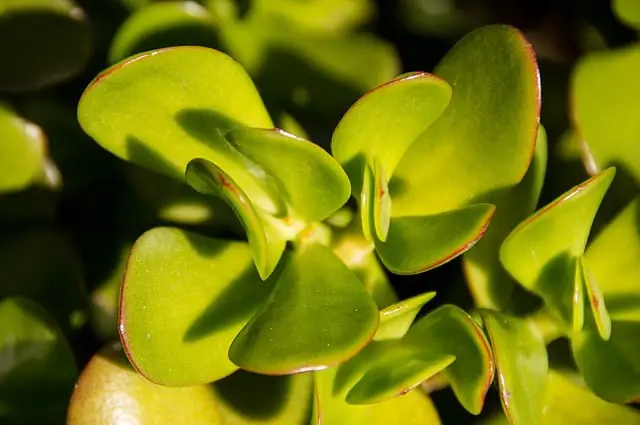Jade plants are a great addition to any indoor garden. They are low-maintenance, easy to care for, and can live for years with the right conditions. However, even the most experienced gardeners can run into problems with their jade plants.
If you notice your jade plant is starting to wilt, lose leaves, or turn brown, it may be dying. But don’t worry, there are steps you can take to save your plant.
Identifying the problem is the first step to save a dying jade plant. There are several reasons why a jade plant may be dying, including overwatering, underwatering, root rot, and pests.
Understanding the cause of the problem is crucial in determining the best course of action to save your plant. Once you have identified the problem, you can take steps to revive your plant and prevent future problems.
Key Takeaways
- Identifying the problem is crucial in saving a dying jade plant.
- Proper jade plant care is essential for preventing future problems.
- With the right care and attention, a dying jade plant can be revived and thrive again.
Check out these other related posts:
Identifying the Problem
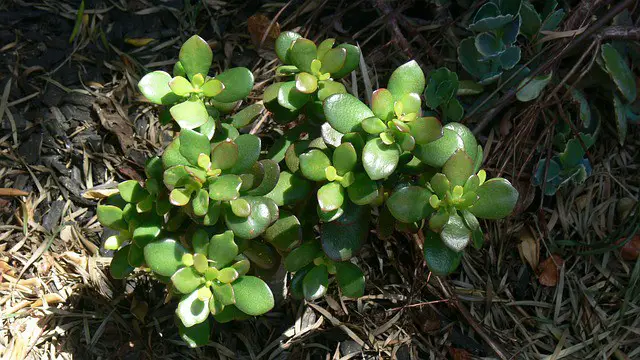
When a jade plant is dying, it is important to identify the problem as soon as possible. This will help in taking the necessary steps to save the plant. In this section, we will discuss how to recognize symptoms and common problems that can cause a jade plant to die.
Recognizing Symptoms
Some common symptoms of a dying jade plant include yellow leaves, dropping leaves, wilting leaves, brown leaves, brown spots on leaves, yellowing leaves, stunted growth, and branches falling off.
When the leaves of a jade plant turn yellow, it is a sign of dehydration or pest infestation. Mealybugs and spider mites are common pests that can infest jade plants. If the leaves are wilting, it could be a sign of overwatering or underwatering.
Overwatering can cause the soil to become waterlogged, leading to root rot and fungal diseases. Underwatering can cause the leaves to become dry and brittle, leading to break off and stunted growth.
Common Problems
One of the most common problems that can cause a jade plant to die is poor soil condition and drainage. If the soil does not drain well, the roots of the plant will become waterlogged, leading to root rot and fungal diseases. It is important to ensure that the soil is well-draining and that there are drainage holes at the bottom of the pot.
Another problem that can cause a jade plant to die is pest infestation. Mealybugs and spider mites are common pests that can infest jade plants. Mealybugs can be identified by the white cottony substance they leave behind on the leaves and stems of the plant.
Spider mites can be identified by the fine webbing they leave behind on the plant.
Overwatering and underwatering are also common problems that can cause a jade plant to die. Overwatering can cause the soil to become waterlogged, leading to root rot and fungal diseases. Underwatering can cause the leaves to become dry and brittle, leading to break off and stunted growth.
Understanding Jade Plant Care
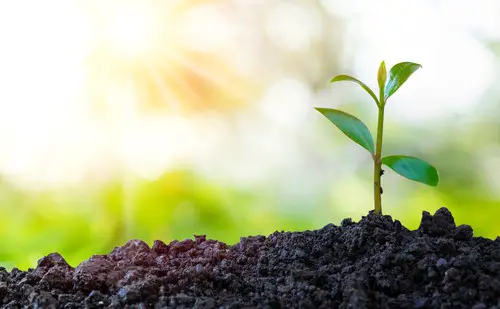
Jade plants, also known as Crassula ovata, are succulent plants that are native to South Africa. These plants are popular for their thick, fleshy leaves and their ability to thrive in low-maintenance conditions. However, even jade plants can experience problems and begin to wither if they are not cared for properly.
1. Watering and Soil
One of the most important aspects of jade plant care is watering and soil. Overwatering or underwatering can cause serious problems for jade plants. It is important to water jade plants only when the soil has completely dried out.
Good drainage is also crucial for jade plants, as they can suffer from root rot if they are left in standing water.
When watering jade plants, it is important to give them a good soak. This means watering the plant until water begins to drain out of the bottom of the pot. This ensures that the roots receive enough water and helps to prevent the buildup of salts in the soil.
Jade plants thrive in well-draining soil. A mixture of sand, perlite, and potting soil can help to create the ideal growing conditions for these plants.
2. Light and Temperature
Jade plants require bright, indirect sunlight to thrive. Direct sunlight can cause the leaves to burn and can lead to drought stress. However, too little sunlight can cause the plant to become leggy and weak. It is important to find a balance between too much and too little sunlight.
Jade plants are hardy and can tolerate low temperatures, but they should be kept in a warm environment. Temperatures below 50°F can cause damage to the plant.
3. Pruning and Propagating
Pruning is an important part of jade plant care. This helps to keep the plant looking neat and tidy, and can also encourage new growth. Dead or damaged leaves should be removed promptly to prevent the spread of disease.
Jade plants are easy to propagate, and this can be a great way to create new plants. Propagation can be done by taking cuttings from the plant and allowing them to root in water or soil.
Reviving a Dying Jade Plant
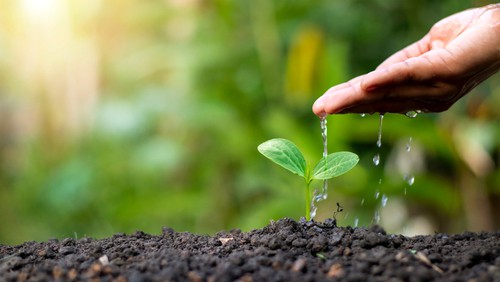
Jade plants are hardy succulents that can thrive in a variety of conditions. However, they are susceptible to certain issues that can cause them to wilt, discolor, and eventually die. If you have a dying jade plant, don’t give up hope just yet. With the right care, you may be able to revive it and restore it to its former glory.
1. Addressing Overwatering and Underwatering
One of the most common reasons for a jade plant to die is overwatering or underwatering. If the soil is too wet or too dry, the plant’s roots can become damaged, leading to wilting, yellowing leaves, and even root rot.
To address overwatering, it’s important to let the soil dry out completely before watering again. Check the soil at the base of the pot through the drainage holes. If it feels dry, drought stress is the problem, but if the soil feels boggy or saturated, then overwatering is the issue.
To address underwatering, make sure the soil is moist but not waterlogged. Water the plant thoroughly, allowing the excess water to drain away. Make sure the pot has drainage holes to prevent water from accumulating at the bottom of the pot.
2. Treating Pest Infestations
Pests can also cause a jade plant to die. Common pests that affect jade plants include spider mites, mealybugs, and scale insects. To treat a pest infestation, use neem oil or another organic pesticide. Apply the pesticide according to the manufacturer’s instructions, making sure to cover both the tops and bottoms of the leaves.
3. Correcting Light and Temperature Issues
Jade plants need bright, indirect sunlight to thrive. If your plant is not getting enough light, move it to a brighter location. However, be careful not to expose it to direct sunlight, as this can scorch the leaves.
Jade plants also prefer warm temperatures between 65 and 75 degrees Fahrenheit. If the temperature is too cold, the plant may become stressed and start to wilt. Move the plant to a warmer location, away from drafty windows or doors.
4. Repotting and Pruning
If your jade plant is overgrown or has root rot, it may be necessary to repot it. Choose a pot that is slightly larger than the current one, and use an indoor plant soil mix or readymade soil premixes that are well-draining.
Prune any dead or diseased leaves or branches, making sure to use clean, sharp scissors or pruning shears. This will help the plant focus its energy on new growth and recovery.
Reviving a dying jade plant requires patience and the necessary steps to address the underlying issues. By addressing overwatering and underwatering, treating pest infestations, correcting light and temperature issues, and repotting and pruning as necessary, you can save your overwatered jade plant and revive it to its former beauty.
Preventing Future Problems

To prevent future problems with jade plants, it is important to maintain proper care, monitor for pests and diseases, and avoid neglect.
1. Maintaining Proper Care
Proper care is essential to keep jade plants healthy. Over-fertilizing and poor lighting can damage the plant and cause wilting or leaves dropping. It is important to provide the plant with sufficient light, but avoid placing it in direct sunlight.
Jade plants are succulents and prefer dry soil, so it is important to avoid over-watering. The plant should be watered only when the soil is dry to the touch. Fertilizer should be applied once a month during the spring and summer.
2. Monitoring for Pests and Diseases
Jade plants are susceptible to pests such as mealybugs and spider mites. These pests can cause damage to the leaves and stems, and eventually kill the plant. It is important to monitor the plant regularly for signs of infestation, such as white, cottony growths or webbing on the leaves.
If pests are detected, the plant should be treated with neem oil or insecticidal soap. Diseases such as root rot can also affect jade plants. This can be caused by over-watering or poor drainage. It is important to ensure that the plant is in a pot with drainage holes and the soil is well-draining.
3. Avoiding Neglect
Neglect can also cause problems for jade plants. Lack of water or insufficient lighting can cause the plant to wilt or lose leaves. It is important to provide the plant with proper care and attention, especially during periods of rapid growth.
Propagating jade plants can also help prevent neglect. Cuttings can be taken from the plant and rooted in soil to create new plants. Jade plants are also known as money plants or money trees, and are believed to bring good luck and prosperity when placed in the home.
Frequently Asked Questions
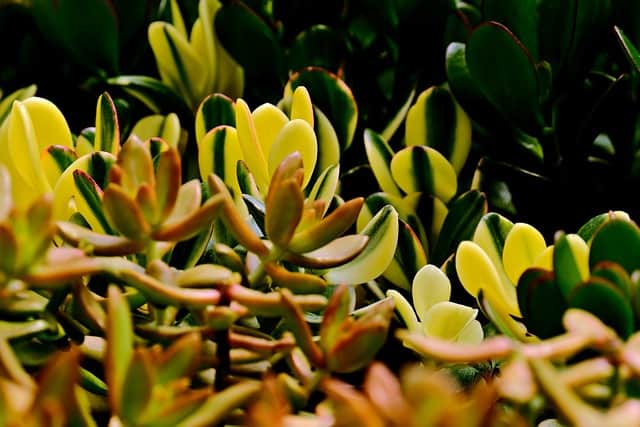
What are the signs of a dying jade plant?
Jade plants are hardy and can survive in a variety of conditions, but they can still die if they are not cared for properly.
Some common signs that your jade plant is dying include drooping leaves, yellow leaves, black/brown spots on leaves, leggy growth, brown leaves, white spots on leaves, and leaves falling off.
If you see any of these signs, it’s important to carefully examine your plant and take appropriate steps to save it from dying.
How often should I water my jade plant to prevent it from dying?
Overwatering is a common cause of jade plant death, so it’s important to be careful when watering your plant. Jade plants are succulents, which means they store water in their leaves and stems.
You should only water your jade plant when the soil is completely dry. Depending on your climate and the size of your pot, this could be once a week or once every few weeks.
What should I do if my jade plant is dropping leaves and branches?
If your jade plant is dropping leaves and branches, it may be a sign of overwatering or underwatering. Check the soil moisture level and adjust your watering schedule accordingly. If the problem persists, you may need to repot your plant in fresh, well-draining soil to prevent root rot.
How can I revive my wilted jade plant?
If your jade plant is wilted, it may be a sign of underwatering or exposure to extreme temperatures. Move your plant to a cooler, shadier location and water it thoroughly. If the problem persists, you may need to repot your plant in fresh soil.
What are some common causes of jade plant death?
Some common causes of jade plant death include overwatering, underwatering, exposure to extreme temperatures, lack of sunlight, and pest infestations. It’s important to identify the cause of your plant’s decline so you can take appropriate steps to save it.
Is it possible to save a rotting jade plant?
If your jade plant is rotting, it may be too late to save it. However, you can try to save it by cutting off the healthy parts of the plant and propagating them in fresh soil. It’s important to remove all the rotting parts of the plant to prevent the spread of disease.

Hey, I’m Lisa and I’ve been an avid gardener for over 30 years. I love writing, talking and living in the garden! Feel free to connect with me on my socials below

